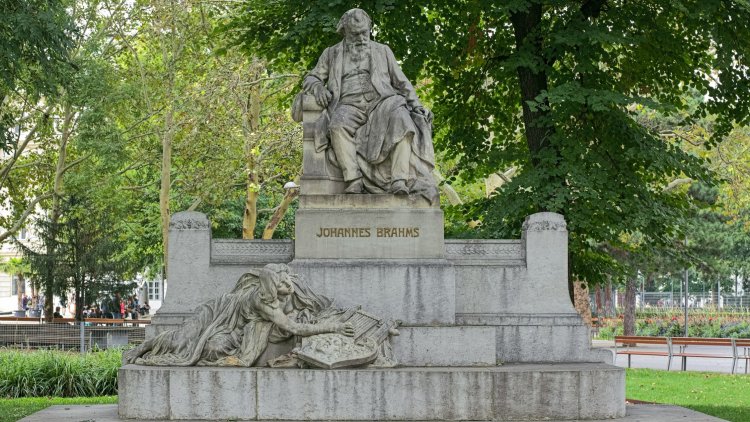The Musical Legacy of Johannes Brahms His Most Famous Works
Discover the timeless brilliance of Johannes Brahms through his iconic compositions. Explore his greatest works and musical influence.

Johannes Brahms, a towering figure in the realm of classical music, left an indelible mark on the world with his profound compositions. Born in Hamburg, Germany, in 1833, Brahms emerged as one of the leading composers of the Romantic era, alongside giants like Beethoven and Wagner. His music, characterized by its emotional depth, intricate harmonies, and rich orchestration, continues to captivate audiences worldwide.
In this article, we delve into the musical legacy of Johannes Brahms, focusing on some of his most famous works. From symphonies to chamber music, Brahms's repertoire spans a wide range of genres, each piece bearing the hallmark of his genius. Join us on a journey through the timeless melodies and profound expressions that define Brahms's enduring legacy.
Johannes Brahms Symphony No. 1 in C Minor, Op. 68
Brahms's Symphony No. 1 stands as a monumental achievement in the symphonic repertoire. Completed in 1876 after over a decade of meticulous work, this symphony represents Brahms's struggle to live up to the legacy of Beethoven. From its dramatic opening motif to its triumphant finale, Symphony No. 1 exudes the grandeur and emotional intensity of the Romantic era.
The first movement, marked by its majestic brass fanfare and soaring strings, sets the tone for the entire symphony. Brahms masterfully weaves together contrasting themes and motifs, building tension and anticipation with each successive section. The second movement, a soulful adagio, showcases Brahms's gift for lyrical melody, with poignant themes that tug at the heartstrings.
As the symphony progresses, Brahms leads the listener through a series of musical twists and turns, culminating in a thrilling finale that resolves the symphony's earlier conflicts with a sense of triumph and resolution. Symphony No. 1 stands as a testament to Brahms's mastery of form and his ability to imbue his music with profound emotional depth.
Piano Concerto No. 2 in B-flat Major, Op. 83 A Showcase of Johannes Brahms
Brahms's Piano Concerto No. 2 is a tour de force of pianistic skill and musical expression. Composed in 1881, this concerto represents Brahms's continued exploration of the piano as both a solo and orchestral instrument. From its opening flourishes to its dazzling cadenzas, Piano Concerto No. 2 showcases Brahms's mastery of form and his ability to seamlessly integrate solo and orchestral elements.
The concerto's first movement unfolds with a sense of grandeur and expansiveness, as the piano engages in a spirited dialogue with the orchestra. Brahms explores a wide range of musical ideas, from thunderous octave passages to delicate, introspective moments. The second movement, a tender and lyrical adagio, contrasts sharply with the exuberance of the first, showcasing Brahms's gift for melody and his ability to evoke deep emotion through music.
In the final movement, Brahms unleashes a whirlwind of virtuosic display, with the piano and orchestra engaging in a spirited dance of themes and variations. The concerto reaches its climax in a blaze of glory, leaving the listener breathless with its sheer power and intensity. Piano Concerto No. 2 stands as a testament to Brahms's enduring legacy as both a composer and a pianist.
String Quintet No. 2 in G Major, Op. 111 Chamber Music of Johannes Brahms
Brahms's String Quintet No. 2 is a jewel of the chamber music repertoire, showcasing the composer's mastery of counterpoint and his ability to create rich, multi-layered textures. Composed in 1890, this quintet represents Brahms at the height of his creative powers, weaving together five string instruments in a tapestry of sound that is by turns intimate, virtuosic, and profoundly moving.
The quintet's opening movement is a study in grace and elegance, with the strings engaging in a delicate dance of themes and variations. Brahms explores a wide range of musical ideas, from lush, Romantic melodies to intricate contrapuntal passages. The second movement, a spirited scherzo, bubbles with energy and wit, showcasing Brahms's gift for rhythmic invention and his mastery of form.
In the third movement, Brahms turns to a theme and variations structure, weaving a series of increasingly elaborate variations on a simple, folk-like melody. The music ebbs and flows with a sense of inevitability, building to a majestic climax before subsiding into a gentle coda. The quintet's final movement is a tour de force of contrapuntal writing, with the strings engaging in a dazzling display of virtuosity and ensemble playing.
Violin Concerto in D Major, Op. 77 A Masterpiece of Romantic Virtuosity By Johannes Brahms
Brahms's Violin Concerto in D Major stands as one of the most celebrated works in the violin repertoire, revered for its technical brilliance and emotional depth. Composed in 1878, this concerto represents Brahms's collaboration with the renowned violinist Joseph Joachim, for whom the piece was written. From its majestic opening bars to its exhilarating finale, the Violin Concerto showcases Brahms's mastery of both the violin and orchestral writing.
The concerto's first movement opens with a bold, heroic theme introduced by the solo violin, which is soon echoed and elaborated upon by the orchestra. Brahms weaves a rich tapestry of musical ideas, incorporating elements of Hungarian folk music and Classical form. The second movement, a tender adagio, provides a lyrical contrast to the virtuosic fireworks of the first, with the solo violin singing out a soulful melody against a backdrop of lush orchestration.
In the final movement, Brahms unleashes a whirlwind of virtuosity, with the soloist engaging in a dazzling display of technical prowess. The violin and orchestra engage in a spirited dialogue, trading themes and motifs with breathtaking speed and agility. The concerto reaches its climax in a triumphant finale, with the soloist soaring above the orchestra in a blaze of glory.
Ein deutsches Requiem (A German Requiem), Op. 45 By Johannes Brahms
Brahms's Ein deutsches Requiem stands as a towering monument to human spirituality, offering solace and comfort in the face of mortality. Composed between 1865 and 1868, this monumental work represents Brahms's response to personal tragedy and his exploration of themes of loss, redemption, and transcendence. Unlike traditional requiems, which are set in Latin and focus on themes of judgment and divine mercy, Brahms's Requiem is sung in German and emphasizes the universal human experience of grief and consolation.
The Requiem's opening movement, Selig sind, die da Leid tragen (Blessed are they that mourn), sets the tone for the entire work, with its gentle, consoling melody and lush harmonies. Brahms draws on a wide range of musical influences, from the Lutheran chorale tradition to the polyphonic complexity of Bach, weaving together a rich tapestry of sound that is both deeply moving and profoundly spiritual.
As the Requiem progresses, Brahms explores a wide range of emotions, from sorrow and despair to hope and consolation. The central movements, Denn alles Fleisch, es ist wie Gras (For all flesh is as grass) and Herr, lehre doch mich (Lord, make me to know), reflect on the transient nature of life and the eternal truths of faith. The Requiem reaches its climax in the penultimate movement, Wie lieblich sind deine Wohnungen (How lovely are thy dwellings), with its radiant harmonies and soaring melodies evoking the peace and serenity of heaven.
In the final movement, Selig sind die Toten (Blessed are the dead), Brahms brings the Requiem to a sublime conclusion, with the choir and orchestra joining together in a triumphant affirmation of faith and hope. Ein deutsches Requiem stands as a testament to Brahms's deep humanity and his belief in the power of music to console, uplift, and inspire.
Johannes Brahms's musical legacy is a testament to the enduring power of creativity, expression, and the human spirit. From his monumental symphonies to his intimate chamber music, Brahms's compositions continue to captivate and inspire audiences around the world. Through his exploration of themes of love, loss, and redemption, Brahms speaks to the universal truths of the human experience, reminding us of the transformative power of music to heal, console, and uplift the soul. As we celebrate Brahms's contributions to the world of classical music, let us honor his memory by continuing to engage with and cherish his extraordinary body of work, ensuring that his musical legacy remains alive and vibrant for generations to come.
What's Your Reaction?
















